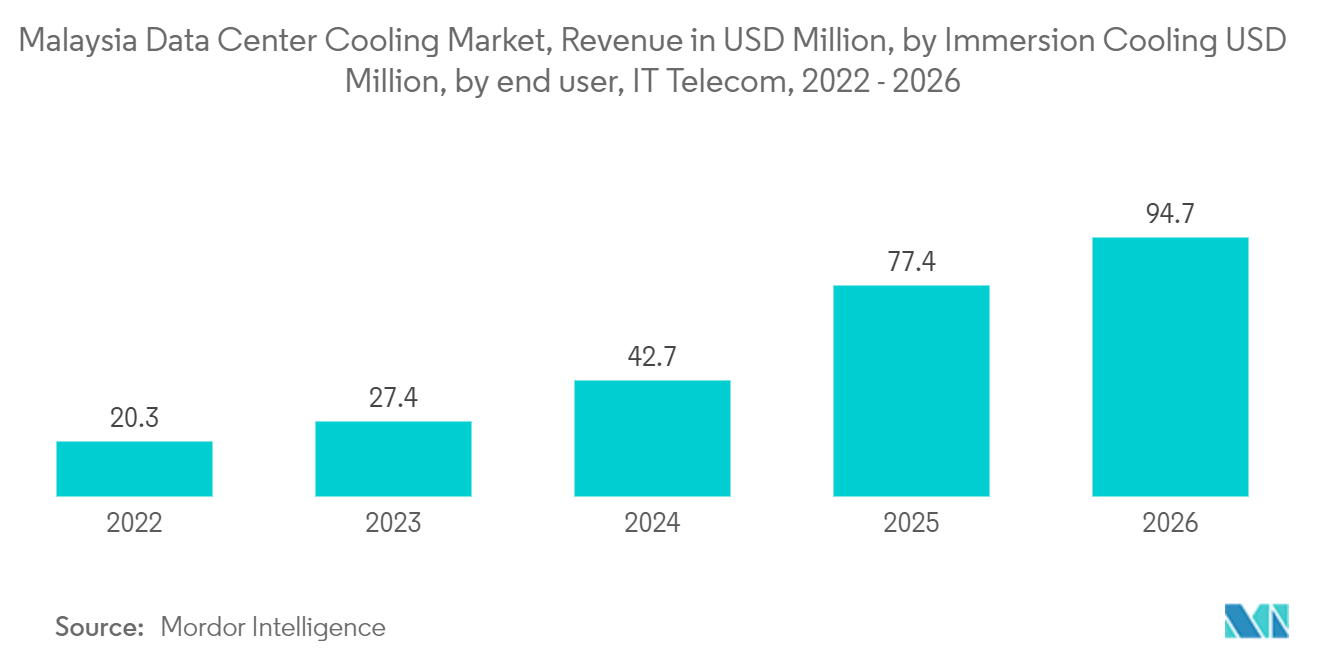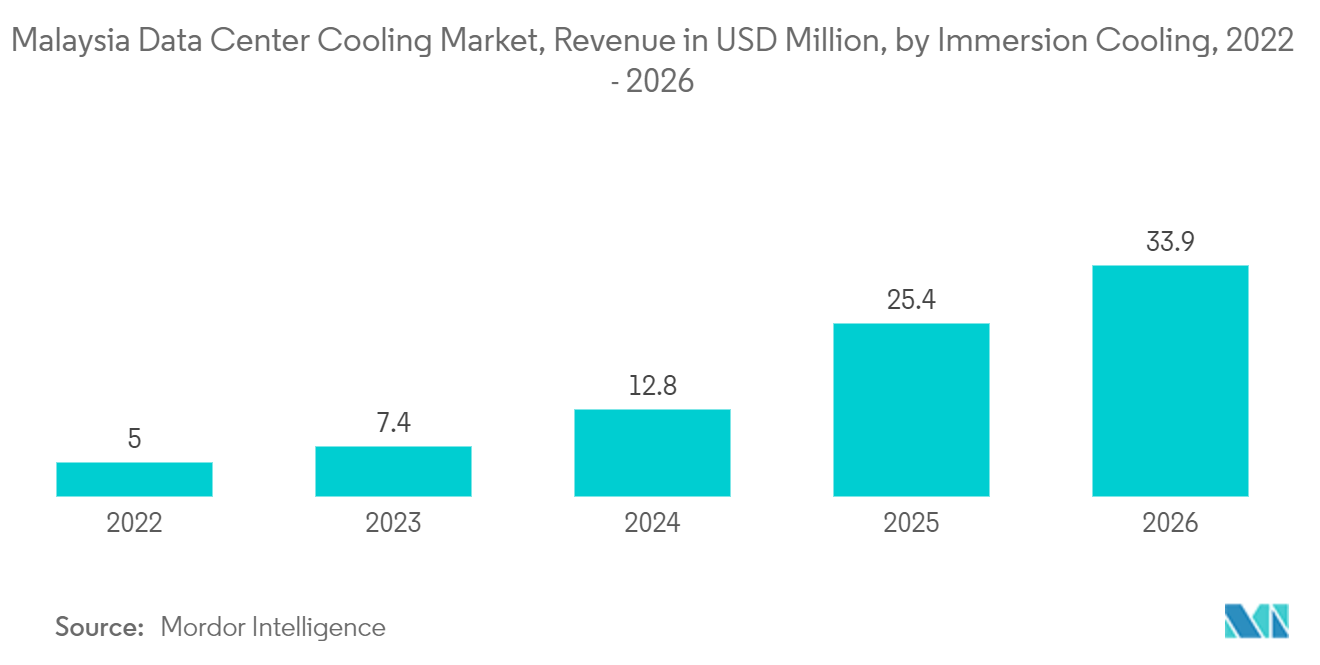Market Trends of Malaysia Data Center Cooling Industry
IT and Telecom Held Significant Share in 2023
- In early 2024, Malaysia had around 33.59 million internet users, with an internet penetration rate of 97.4%. In January 2024, the nation reported 28.68 million social media users, accounting for 83.1% of its populace. Additionally, as of early 2024, there were 44.55 million active cellular mobile connections, exceeding the total population by 129.2%. These statistics highlight Malaysia's strong digital connectivity and active social media participation.
- In August 2023, after securing an access agreement with Digital Nasional Berhad (DNB), Maxis, a leading mobile operator in Malaysia, rolled out its 5G services nationwide
- In Malaysia, post-pandemic economic recovery, robust sales of 5G smartphones, and targeted marketing strategies created significant momentum. Malaysian consumers are increasingly eager to transition to 5G. Furthermore, existing 5G users in the country are actively seeking to enhance their plans with features such as video and music streaming, online gaming, live sports, and cloud storage. Notably, Malaysia boasts multiple internet exchange points, including key players like DE-CIX Kuala Lumpur and MYNAP.
- As of January 2024, Malaysia boasted over 33 million internet users, with an internet penetration rate exceeding 97% of its total population. This penetration rate has experienced a consistent year-on-year growth of approximately 1.1%. The surge in internet users and their data consumption has led to a significant uptick in data traffic, amplifying the need for storage and processing. Consequently, this trend has spurred a heightened demand for data centers across the nation. With the anticipated growth in data centers, there's an inevitable rise in the demand for cooling infrastructure and technology. This is crucial, as the servers and equipment within data centers generate substantial heat, necessitating effective cooling for optimal daily operations.

Liquid-based Cooling is one of the Fastest-Growing Segment During Forecast Period
- Recently, immersion cooling technologies have gained traction, with nearly 40% of data centers adopting them in various forms. These systems utilize coolants that flow through a network of pipes, efficiently drawing heat away from IT equipment. This method proves particularly advantageous for cooling high-density servers.
- Many data centers are shifting towards sustainability to reduce their carbon emissions. Moreover, companies are installing new cooling systems to accommodate the increasing data center construction in the country. For instance, in June 2024, Nxera teamed up with Telekom Malaysia (TM) to establish a data center in Johor, located in southern Malaysia. The facility, equipped with liquid cooling technology, and is designed to support extensive computing, AI functions, catering specifically to cloud hyperscalers and GPU-as-a-Service providers.
- AirTrunk Operating Pty Ltd is at the forefront of revolutionizing AI-ready data centers in the country. immersion cooling is proving to be a transformative solution, boosting efficiency and sustainability while catering to the rapid expansion of AI and high-performance computing. For instance, in July 2024 AirTrunk officially commenced operations at its JHB1 data center campus in Johor. The initial phases of the JHB1 campus will provide more than 50 megawatts (MW) of capacity for its large technology customers. The facility features the company’s first deployment of direct-to-chip liquid cooling technology and high-density racks.
- AI integration is propelling market growth, especially in Malaysia. Guided by the "Malaysia's National AI Roadmap 2021-2025," Malaysia is embracing advanced AI technologies. At the same time, Malaysia is emerging as a prime data center hub, drawing significant investments from tech behemoths like Google, Microsoft, and Nvidia. With the surging demand for AI services, there's a pressing need for innovative cooling technology to handle efficient functioning of AI-based data centers.


